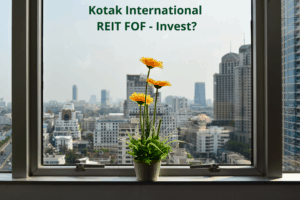
Outlook 2021 – Equity
The Nifty 50 has rallied 84% (March 2020 lows to Dec-20) in just nine months and the rally has been driven mainly by a global

The Nifty 50 has rallied 84% (March 2020 lows to Dec-20) in just nine months and the rally has been driven mainly by a global

HDFC Housing Opportunities Fund, a closed ended thematic fund, launched in December 2017. It sought to invest in housing and all other allied sectors including financing as the sectors looked attractive then. The fund has a mandate to invest at least 80% in its primary theme and up to 20% outside its stated theme.

Many of you wish to build your MF portfolio by modifying our ready-to-use portfolios. Here’s a guide to doing this yourself without impacting the portfolio’s risk profile.

Kotak International REIT FOF NFO is set to open. Should you subscribe? Vidya Bala looks at the REIT space and answers key questions.

Can a low-risk debt fund with an average duration of around just 1.2 years deliver an average 3-year return (rolling 3 year returns since inception

The new flexi-cap fund category recently announced by SEBI will mitigate the risk of many multi-cap funds being forced into buying to mid & small cap stocks. The definition of the flexi-cap category is quite open-ended now. The circular requires flexi cap funds to hold least 65% of their portfolio in equity and equity-related instruments to be flexi cap.

Many of you ask us how you should invest in MFs for the short term. This could be for creating an ‘emergency fund’, ‘medical fund’, ‘funds to pay school fees’ or simply for parking money temporarily for the short term.

While MNC stocks have traditionally enjoyed premium valuations, the last 3 years have seen this space underperform. How do you discover the better ones among them? Use our screener!

Nippon India ETF Nifty CPSE Bond Plus SDL- 2024 Maturity is yet another unique target-maturity debt ETF like Bharat Bond. Is this a good time to invest in it?

If you are a new investor, running screeners through equity apps to pick your stocks, here’s what you need to know about the PE multiple of a stock.

After almost 2 years of underperformance, the small-cap segment is seeing a new set of companies rallying swiftly, to make up for the years of suppressed performance. And several them are backed by fundamentals. If you decide to ride this new wave with a small-cap fund, you may have to wonder if the fund will restrict inflows in a while or suffer in performance if its AUM grows rapidly. So, we dug deeper into the small-cap space to see if we can overcome this constraint. And we think we have the one.

Which categories of funds have unusually high expense ratio? Should you avoid them – be it regular or direct? In which categories of funds is the TER difference between regular and direct too high? And are you better off staying with direct in such categories?
Hold On
You are being redirected to another page,